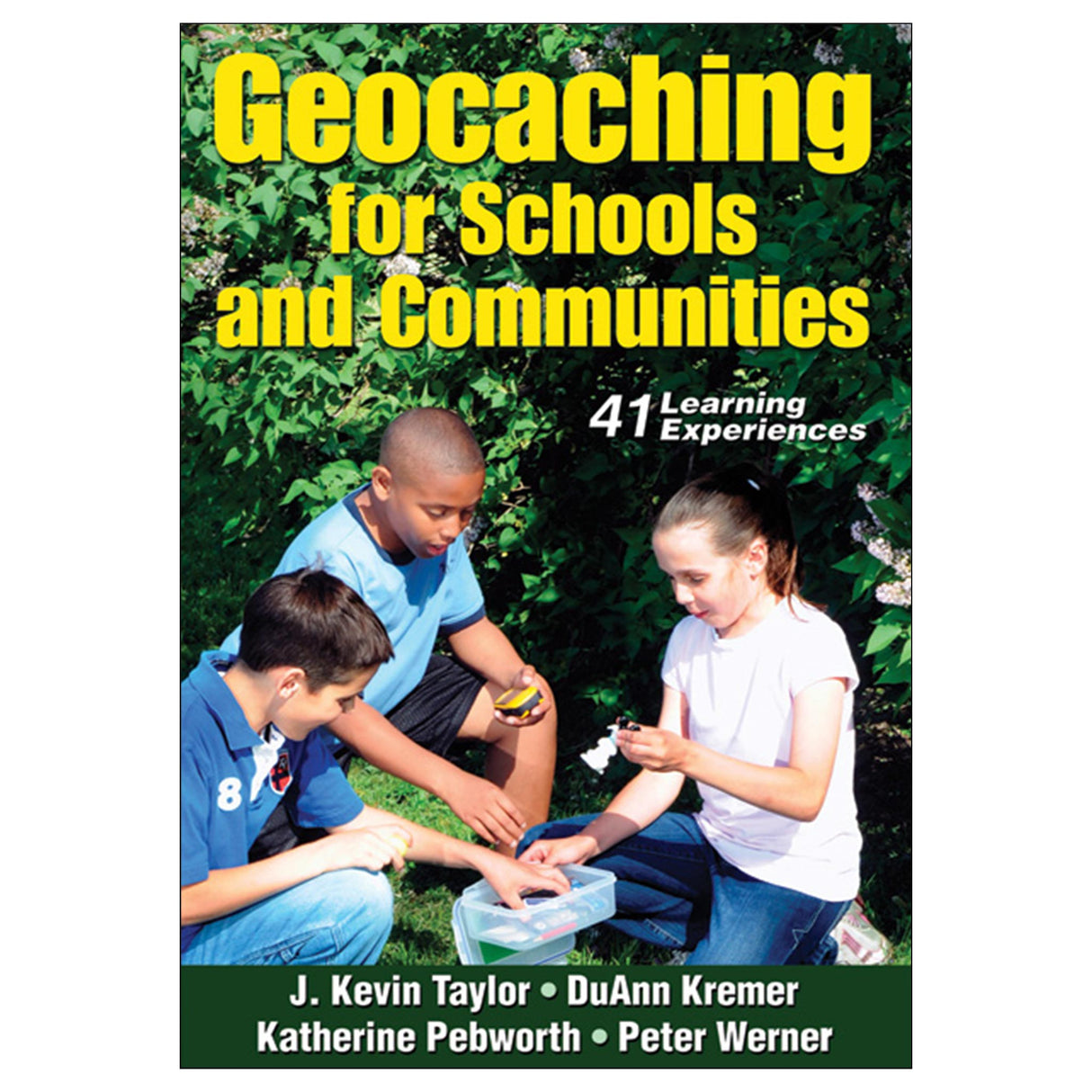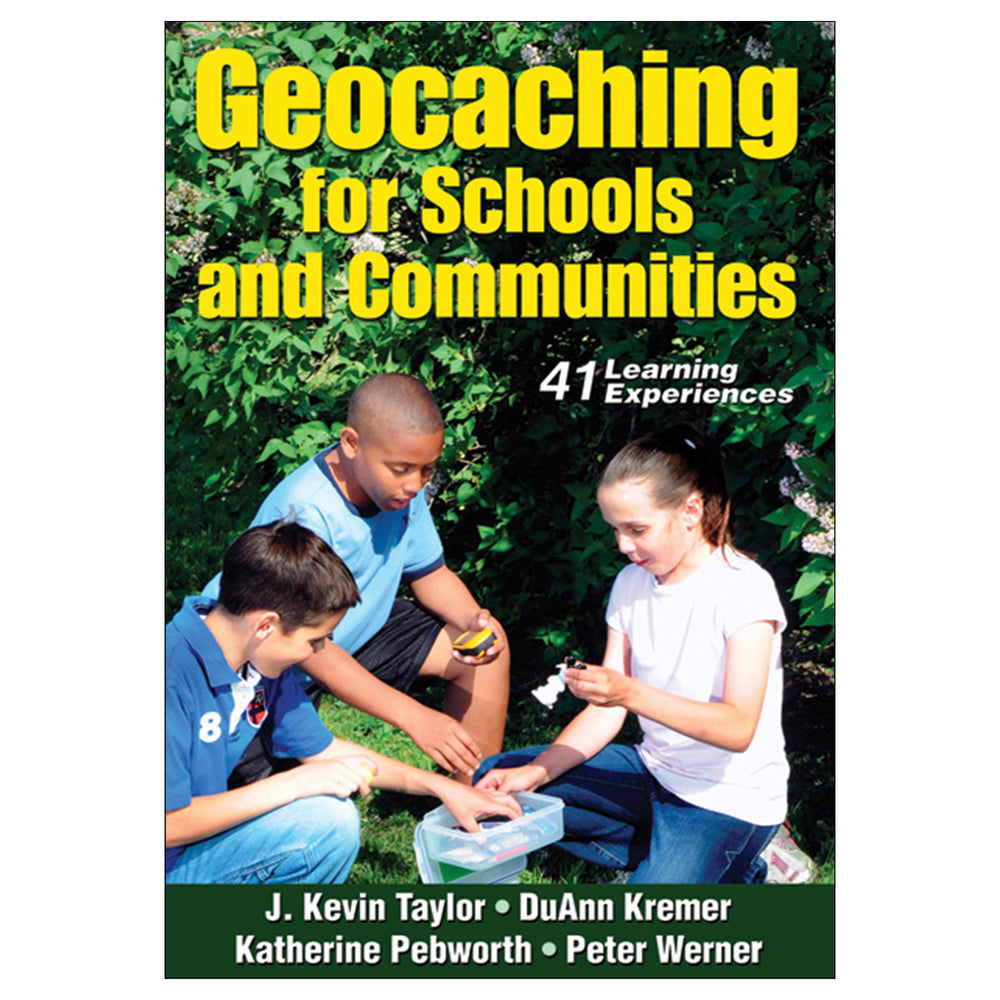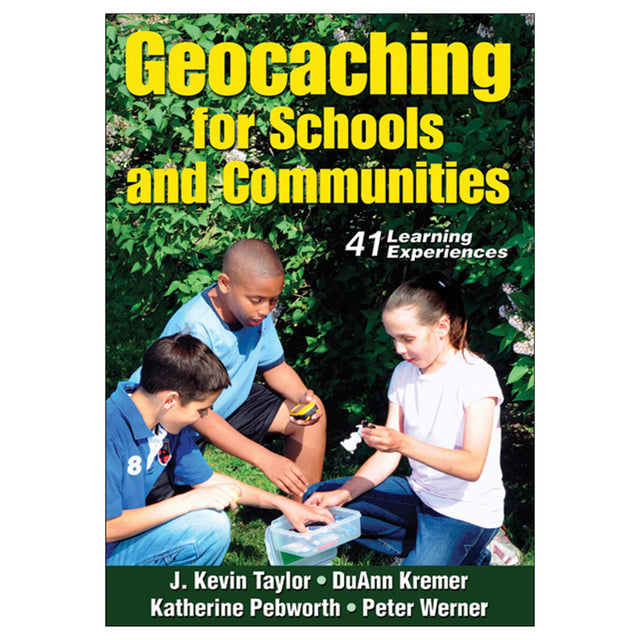Geocaching for Schools and Communities
$28.00 USD
Hide-and-seek is an age-old game that has never lost its allure. Geocaching—using a global positioning system and other navigational techniques to find hidden containers, or caches—brings this classic favorite to an exciting new level.
Geocaching for Schools and Communities is the ideal resource for organizing geocaching for learners of any age group. Written by authors who have presented geocaching at five national AAHPERD conferences, this one-stop resource provides everything you need to know about leading and participating in geocaching activities:
• How to use GPS units and set up caching activities
• How to use both low-tech and high-tech approaches to caching so your fun isn’t dependent on your level of technological expertise
• How to create interdisciplinary connections using caching activities
• Strategies for developing geocaching programs and clubs in a variety of settings, including schools and recreation and youth programs
You learn the history of geocaching, the nuts and bolts of how it works, and strategies for using geocaching for health-related fitness. This book offers in-depth information about satellites and the triangulation necessary for locating latitude and longitude coordinates and how to use computers and the Internet in geocaching as well as low-tech discussions of using maps in finding caches.
You also explore the numerous types of caches available, learn step by step how to find and log a cache, and discover the types of items commonly placed in a cache. Along the way, you receive tips on caching etiquette.
In addition to the geocaching learning experience, the book includes a chapter devoted to achieving fitness through geocaching. All the learning experiences are built around interdisciplinary connections with academic subjects. The book contains four complete learning experiences for each discipline: language arts, science, math, and social studies.
Choose from 31 learning experiences to use with your group, or use these ideas as a starting point to create your own learning experiences. The variety of experiences help keep the adventures fresh and lively, and the learners will clamor for more.
Geocaching for Schools and Communities will get kids, adults, and families outdoors being active and having fun. The interdisciplinary learning experiences—involving physical education, language arts, math, science, and social studies—bring in an educational dimension that enhances the fun for learners of all ages. Through the expert guidance of the authors, you are grounded in the basics and can advance the games as far as you want, adapting them for age and experience levels.
Each learning experience lets you know what ages the activity is appropriate for, the objectives of the experience, the equipment needed, a complete description of how to conduct the activity, and how to assess the experience. The authors also provide key points for leaders to look for as the students go through the experience, as well as ways to vary each activity by introducing new skills or changing the level of difficulty.
So what are you waiting for? There’s a cache somewhere out there for your group right now! Get Geocaching forSchools and Communities and track it down.
Audience
Reference for physical education and classroom teachers and recreation and youth leaders.
Part I: All About Geocaching
Chapter 1. Introduction to Geocaching
Chapter 2. High-Tech Geocaching
Chapter 3. Low-Tech Geocaching
Chapter 4. Basics of Caching
Part II: Implementing Geocaching in Schools and Communities
Chapter 5. Geocaching for Health-Related Fitness
Chapter 6. Beginning Experiences With Geocaching
Chapter 7. Advanced Experiences With Geocaching
Chapter 8. Developing a Geocaching Program





